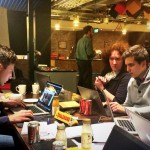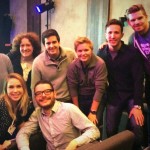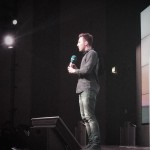Ireland and the US are both approaching a turning point for LGBT rights at nearly the same point in time. Both countries will soon decide the issue of marriage equality, but through quite different means.
In the US, the issue is going go be decided by the courts, and has become a divisive topic split largely along party and geographic lines. On April 28 the US Supreme Court will hear oral arguments for four same-sex marriage cases to determine the power of states to ban same-sex marriages and to refuse to recognize such marriages performed in another state. The court is likely to hand down a ruling in June.
Right now, 37 states have legalized gay marriage (with Alabama in legal limbo) and the other 13 have some type of ban in place. Of those 37 states where gay marriage is legal, 26 were decided by court decision since June 2013 when SCOTUS declared the Defense of Marriage Act (DOMA) unconstitutional in the landmark US v Windsor civil right case. In the US, public support for marriage equality is currently around 60%.
In terms of other legal protections for LGBT people in the US, it wasn’t until 2003 that the US Supreme Court invalidated the remaining sodomy laws in 14 states. Today, it is still completely legal to fire someone for being gay in 29 states.
The situation in Ireland is different. Most people seem united in their opinion on the issue of marriage equality. In 2010 the Dáil and the Seanad easily passed the Civil Partnership and Certain Rights and Obligations of Cohabitants Act, affording same-sex partners nearly equal rights as opposite-sex civil partners and people in same-sex marriages. And, on May 22 the entire country will vote in a referendum to legalize marriage equality. The vote is to assign the term “marriage” to same-sex unions and more specifically and to make the freedoms afforded to same and opposite-sex unions equal. A recent pole suggests that almost 80% of people here support full marriage equality.
In Ireland homosexuality was decriminalized in 1993 (ten years before SCOTUS ruled to strike down sodomy laws), and today it is completely illegal to discriminate against someone because of his or her sexual orientation.
To be frank, before moving to Dublin I would not have expected Ireland to be so far ahead of the US in its country-wide protections and public support for LGBT people. I suppose that this incorrect assumption stems from the fact that the first amendment of the United States Constitution draws lines for the role of religion in government and the Irish Constitution does not. For many Americans, the “separate but equal” idea, while not actually in our Constitution, is a source of pride and principle. We like to believe that we are a secular state.
Ireland is a country where 85% of the population self-identifies as Roman Catholic, yet 80% of people support marriage equality, the people and government officials are on the same page for extending equal protections to all citizens, and it is illegal to discriminate based on sexual orientation.
If it were really true that religion does not have a place in politics, then the US would not be in the grips of the marriage equality debate, SCOTUS would not have to (finally) step in as they have done in the past, and it would be completely illegal to fire a person in 29 states for being gay.
I am left wondering: “what gives, America?”
This Catherine Tate comedy sketch pokes fun at some of these assumptions.


















